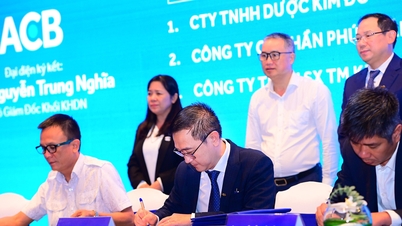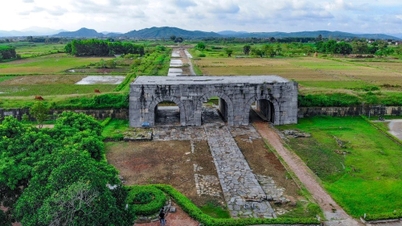The cooperative urgently needs capital.
During the recent 2025 winter-spring and summer-autumn rice seasons, farmers in An Phuoc Cooperative, Dong Thap province, received support from local authorities and relevant units to implement a high-quality, low-emission rice cultivation model on 50 hectares. Farmers participating in the model were assisted by relevant agencies in connecting with technology and mechanization service providers to apply seed-saving row planting solutions and to manage rice care, fertilization, pesticide spraying, harvesting, and straw collection using various modern machines and advanced cultivation processes. As a result, cooperative farmers significantly reduced production costs while improving productivity and product quality. Furthermore, the rice was purchased by businesses at a price higher than the market rate, leading to a profit increase of over 3 million VND/hectare/season.

Rice harvesting using machines at the high-quality, low-emission rice production model in Tien Thuan Cooperative, Can Tho City.
Mr. Nguyen Ngoc Nguyen, Director of An Phuoc Cooperative, said: "The cooperative has 58 members, with a rice cultivation area of 200 hectares. Based on the success of the pilot model of high-quality, low-emission rice cultivation at the cooperative, the Board of Directors wants to quickly expand the model to the entire cooperative, but is facing difficulties in investing in equipment, machinery, and technology. The reason is that the cooperative lacks capital, has no collateral to secure loans, and has not yet accessed loans with preferential interest rates and long repayment periods."
Farmers in many rice-growing cooperatives in the Mekong Delta are in dire need of financial resources to invest in infrastructure and modernize equipment to meet production development requirements. In particular, farmers need loans with preferential interest rates to invest in machinery and technology to apply cultivation processes and techniques under the 1 million hectare rice project. Specifically, this includes purchasing precision sowing equipment to reduce seed, fertilizer, and pesticide use; applying alternating irrigation technology; and investing in machinery and technology for straw collection and processing in a circular manner to increase the value chain. According to Mr. Truong Huu Tri, Director of Go Gon Cooperative, Tay Ninh province, the cooperative urgently needs capital to invest in machinery for its members to effectively implement high-quality, low-emission rice cultivation techniques, as well as develop mechanized services to increase revenue. However, the cooperative has difficulty accessing loans from banks.
There are many reasons for this situation, such as cooperatives lacking collateral to secure loans; cooperatives having weak production and business organization capabilities; and the small scale of production in many cooperatives, leading banks to often assess their loan applications for machinery investment as unfeasible, inefficient, and slow to recover capital.
Focus on resolving obstacles.
In Can Tho City, the Department of Cooperative Economics and Rural Development under the Ministry of Agriculture and Environment, in collaboration with the School of Public Policy and Rural Development, organized a workshop titled "Applying Digitalization and Supporting Access to Finance for the 1 Million Hectare High-Quality Rice Program." At this workshop, delegates focused on analyzing and clarifying the difficulties and obstacles that cooperatives, farmers, businesses, and other stakeholders are facing regarding capital in implementing the 1 Million Hectare Rice Program. Delegates proposed policy mechanisms and solutions to address these issues promptly.
Many delegates suggested that in the future, relevant agencies need to establish credit guarantee mechanisms, creating conditions for cooperatives and organizations/individuals to access loan capital with preferential interest rates and increased unsecured loan limits. They also emphasized the need to strengthen training and capacity building for cooperatives, and to facilitate the expansion of cooperative operations and linkages, including the formation of cooperative unions, to maximize the efficient use of capital in investing in machinery and developing agricultural services.
Mr. Tran Minh Hai, Vice Rector of the School of Public Policy and Rural Development, stated: "To implement the 1 million hectare rice project, capital and mechanization are indispensable. Local authorities must participate with banks and mechanization enterprises to connect cooperatives and businesses with access to capital through methods that do not require collateral such as land use right certificates, but rather through linkage contracts, products, and technological applications to ensure product transparency. Only then will the mechanization component of the project be successful. Currently, some localities are requesting permission from the National Assembly to convert agricultural land to fruit tree cultivation or other purposes, so the area participating in the project is fluctuating. The People's Committees of provinces and cities need to promptly issue decisions recognizing the areas and land participating in the 1 million hectare rice project."
According to Mr. Dang Anh Tai, Director of the Ho Chi Minh City Development Commercial Joint Stock Bank (HDBank) Can Tho branch, many cooperatives and businesses complain about banks requiring collateral when lending. In reality, banks also want to lend without collateral, but require businesses and cooperatives to demonstrate transparency and clarity. To achieve this, these entities must undergo independent audits. This is one of the criteria for evaluating the credit rating of businesses and cooperatives, and also forms the basis for building trust among credit institutions to readily invest capital even without collateral.
Over nearly two years of implementing the 1 million hectare rice project, relevant agencies have identified more than 942,000 hectares of specialized rice-growing areas, attracting over 1,230 cooperatives and cooperative groups, and 210 businesses to participate. The total credit demand has reached nearly 83,000 billion VND for production, processing, and consumption linkages, and for launching a shared digital platform to identify raw material areas and connect MRV data. According to Ms. Nguyen Thi Hoang Yen, Deputy Director of the Department of Cooperative Economics and Rural Development, the unit has coordinated with the State Bank of Vietnam to issue and publish a list of 942,357 hectares of specialized rice-growing areas eligible for loans, along with specific guidelines on cooperative-business-bank linkages. This is a very important step in shifting from individual support to a value chain financing mechanism, creating momentum to promote the entire ecosystem of the 1 million hectare rice-growing project.
Text and photos: KHANH TRUNG
Source: https://baocantho.com.vn/no-luc-khoi-thong-nguon-von-cho-thuc-hien-de-an-1-trieu-hec-ta-lua-a192986.html







![[Photo] Prime Minister Pham Minh Chinh presides over a meeting on private sector economic development.](/_next/image?url=https%3A%2F%2Fvphoto.vietnam.vn%2Fthumb%2F1200x675%2Fvietnam%2Fresource%2FIMAGE%2F2025%2F12%2F20%2F1766237501876_thiet-ke-chua-co-ten-40-png.webp&w=3840&q=75)




























































































Comment (0)